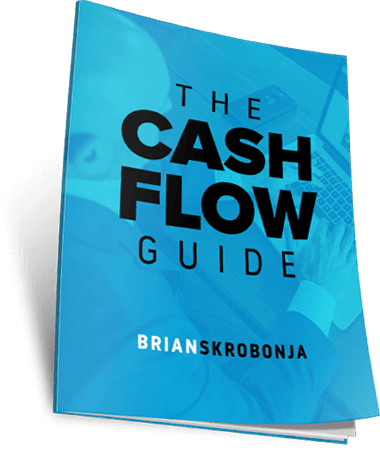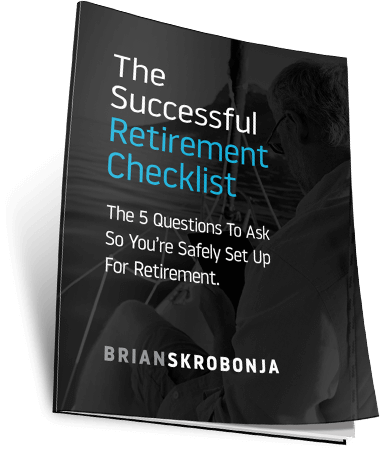One of the mantras around my house is, “nothing changes if nothing changes”. It is a reminder to not complain about an outcome or circumstance but to find a solution.
Typically it takes nothing more than a simple shift in mindset or a behavior or attitude change that makes the difference and leads to a more favorable outcome.
For you, you might be at a place where you feeling stuck or confused about what your next move should be. Maybe you’re thinking that there is more, that maybe there is just something you’re missing.
That is a problem, and instead of rolling this around in your head over and over again and focusing on the symptoms of your situation, right now is the time to start thinking differently about money.
There is no better time in history than right now to learn what the wealthiest investors are doing to do this.
You have the opportunity to use this information to grow wealth for yourself.
The truth is that, the wealthiest investors in the world keep getting wealthier not because they are lucky or because of privilege. They are getting wealthier because they are playing a different game than the average investor. They do not rely on 401ks, average rates of return and stock market performance to find security for themselves.
Their attitude about money is completely different. What they focus on is entirely different, and how they invest their money is completely different.
While the average investor is spinning their wheels, following the herd in their search for financial freedom and ultimately being discouraged with their results, the wealthy are reaching new levels of wealth and financial independence.
Why is that?
What I have found is that the average investor has been promised if they fund their retirement accounts, accelerate the pay off of their home, and store money in the bank, that security will follow. However, this advice has proven over and over again to fall short of producing the results they were promised.
Markets go up, then the profits go away with the mention of a world conflict: a terrorist attack, a deadly virus, or some other circumstance outside of our control, causing the pursuit of financial freedom to be delayed or lost.
A commitment of resources to rapidly pay down debt becomes tunnel vision to only find along the way that the need for money never stops. Home repairs, college tuition, and automobile purchases all compete for the same resources putting pressure on retirement and future goals.
Storing cash in the bank promises security by having easy access to cash, but only proves to be a burden knowing nothing is being done to grow your money for the future.
Yet, this is how the majority of people handle their money and it is leading them all to the same place, a place of frustration, disappointment and disillusion.
What follows is a search for something better: a better investment, a lower rate of return on loans, a higher earning bank account, but it is all more of the same thing.
It’s the idea of doing something that doesn’t work with the belief that if you just work a little hard then maybe it will work.
It is an illusion.
The average person following this approach find themselves relying on and hoping for things outside of their control to bring them happiness, success, and financial freedom.
This is most evident when there are extremes happening in the market that are either good or bad.
When markets are good, greed sets in and there is euphoria, optimism, and hope.
It spurs a belief and eagerness that more growth is coming that is entirely based on things and events outside of their control. Its equivalent to a gamblers rush.
When markets are bad, fear sets in and there is anxiety, pessimism, and hopelessness.
It spurs a belief that more losses are coming and leaves them with a sense of uncertainty about what will happen next.
All of this is again based entirely on things and events outside of their control.
This is what I call a spectator approach to money, which means that you are just watching to see what happens next and are simply along for the ride with no control over the outcome.
There is a better approach to this. To learn what that is, all you have to do is turn to those who are already getting the results you are looking for and duplicate what they are doing successfully.
There are certain things the wealthiest people think and do that make them rise above the status quo to accomplish “financial freedom” status.
It is NOT luck in the market that makes someone successful. It is the information that the wealthiest people have and what they do with that information that creates the result.
That is why a successful person can become wealthy, lose it all then recreate the wealth again.
While a lottery winner can be lucky and receive millions, they have no ability to replicate their wealth again.
The point is this, it is not luck that creates wealth; it is information and what you do with that information creates the wealth.
The wealthy follow a system, a roadmap of sorts, for creating income that supplies their financial freedom.
Isn’t that what we are all seeking?
All we have to do is look to Yale’s endowment for a glimpse into what one of the world’s top investors do to grow wealth.
With billions under management, their goal is to consistently produce income that is used to fund their school’s operations.
They strive for consistent growth with a focus on avoiding losses using proven strategies to control the outcome, all with only 17% in the stock market.
Now you may be asking why you would compare yourself to a multi-billion-dollar endowment?
The answer is, because their goal is similar to what most investors are trying to accomplish, and that is to create income. And to do that, these investors are not leaving their goal for income to chance by relying solely on market volatility in their search for yield.
The problem is that we find the average investor allocating nearly 100% of their money in the stock market with no strategy other than hope.
They hear about double-digit averages and are like gamblers going all-in in pursuit of promised riches.
But if this is the best strategy, then why does one of the largest and most successful investors – Yale’s Endowment – not see it the same way?
I contend that there are two reasons for this. Here they are on a bumper sticker.
#1 – They understand that an average rate of return is nothing more than math trickery and has little if anything to do with actual gains in your portfolio.
#2 – They understand that diversification is more than picking a few mutual funds.
The difference is this:
Wealthy investor’s focus on REAL RATES OF RETURN while the average investor is focused on AVERAGE RATES OF RETURN.
Real Rates of Return versus Average Rates of Return
On the surface these may both seem like the same thing, perhaps a game of semantics, but there is a difference and it is one of the bits of information successful people know and understand.
The attraction of a double-digit average is appealing to those who don’t understand the differences between these two forms of returns. This is why you need to pay attention to this little bit of information to learn its importance.
An average rate of return is a problem at so many levels, but here is a simple example to consider:
$100 – 50% = $50
$50 +100% = $100
Average is 25%…no profit
What an average neglects to reflect in it computation is what it takes to recoup a loss form one year to the next.
If you lose 10%, it takes 11% to get back to break even.
If you lose 30%, it takes 43% to get back to break even.
If you lose half of your money that means you have to double it to get back to where you started from, so a 50% loss requires a 100% gain just to be made whole.
If you recall back in December of 2018, the market went down double digits then when the calendar flipped to 2019, the market went up double digits.
The headlines touted the double-digit gains for the year when in fact year over year there was absolutely no growth.
The REAL RETURN through this up and down market movement was zero!
The wealthy know and understand this misleading math and focus their attention on consistency over peaks and valleys.
Their focus leans toward minimizing losses and controlling the outcome.
This is one of the key differences that is keeping the average investor from experiencing the growth and freedom they are seeking. The second is how the average investor approaches diversification.
Asset allocation, diversification and risk management are all based on philosophies for how to spread out risk.
The average investor tends to rely on mutual funds for allocating their money in their portfolio and ignore most everything else.
They buy a growth fund or two, an international fund and maybe a target date fund using average rates of return as a filter for which to choose.
Now, it shouldn’t surprise you at this point to learn that the most successful investors are doing things different.
The range of products they use is much broader and they don’t rely on any one to type and they certainty don’t use averages of past performance to dictate their choices.
Portfolio diversification goes beyond the stock market and includes such things as alternative investments, annuities and life insurance that can be used to formulate a robust portfolio that is designed to level the valleys of the stock market and grow wealth through income and consistency.
The #1 thing large investors like Yale realize that the average investor doesn’t seem to be thinking about is that financial freedom, security, success is not determined solely on how much money you have, rather it is a measurement of how much income is generated from the assets they have.
There is a difference and the key to understanding this is being clear on why investors invest in the first place.
You have to realize that there are certain things the wealthiest people think about and do that make them rise above the status quo to achieve “financial freedom” status.
The entire idea around saving and investing money is based on one thing and that one thing is consistent income.
That’s it!
Yale focuses on having income generated from its assets to fund their operations.
Ultimately, your financial freedom is rooted in having your investments generate income to support your financial lifestyle. That in and of itself is the key difference between how most successful investors think versus how the average person thinks.
You have to ask yourself, if income is the key to having financial freedom, then why is there not a greater focus on creating income-producing assets? It is what I have found to be the key and it is why I believe that endowments have this right and individual investors have it wrong.
Endowments are focused on income from their investments to lessen their dependency on tuition.
I see many people work hard, have good paying jobs, invest in their retirement plans at work yet they feel strapped and never seem to get ahead. The average investor is more focused on simply growing their investments while they rely on their ability to work to generate income. It is completely backwards!
If the average investor would begin to think like the endowments think, they could generate income from their investments and rely less on the need to work to create income. That is the mindset needed to reach a point of being financially free.
Having your income satisfied through your assets leaving you free to focus on other more meaningful things with your life here on earth.
The mistake many investors make that prevent this from happening is the belief that their 401k or bank account is their security or their goal.
People often express goals in dollar amounts. “I want $1MM by age 60”, for instance. Ok so, you have $1MM, but what does that mean?
We don’t accumulate money simply to have a stack of $100 bills. We accumulate money to use it. And how do we use money? Through income
Remember for the average investor, the mindset revolves around the growth of their money when in fact the goal should be to create an income strategy, just like the endowments.
Now, some would argue that if you have $1MM then you have money to spend, they simply take from their stack of $100 bills.
The problem with this idea of taking from your stack of money is that you have to continuously replenish your stack to prevent from running out of $100 bills.
Using this approach leaves you having to either work to earn more money or living on hope that the stock market produces positive returns that exceed what your using.
What the endowments have figured out is that rather than spending the stack of $100 bills, they focus on having those $100 bills create income to spend.
If you create income from your stack of $100 bills, what you are doing is you’re hanging on to your money and living off the income your money is generating
Imagine having assets that produce income for you to use and spend releasing you from having to work to generate an income. That is financial independence. The focus has got to be on creating income.
Now, the other point to understand when it comes to creating income is the need for consistency.
This is where having too much risk of the stock market puts your income at risk and why the idea of using the stock market to replace your spending is a dangerous game.
Volatility and income are not two words you want together.
When it comes to income, you want to hear consistency of income. Again, this is where the endowments have it right.
By having less exposure to the stock market, endowments focus on income-producing strategies with the goal of achieving consistency to fund their budget needs.
If you’re searching for a new way to think about and grow your wealth, now is an opportune time to take your financial planning to a new level.
You can try to do your own research and learn all the details of what I discussed with you on your own.
Then try to assemble a team of professionals who understand these concepts so you can begin to implement them in your planning.
Or you can have everything discussed in this podcast done for you through my 5 Step BUILD Wealth System™.
Whichever path you choose, good luck!
Brian







